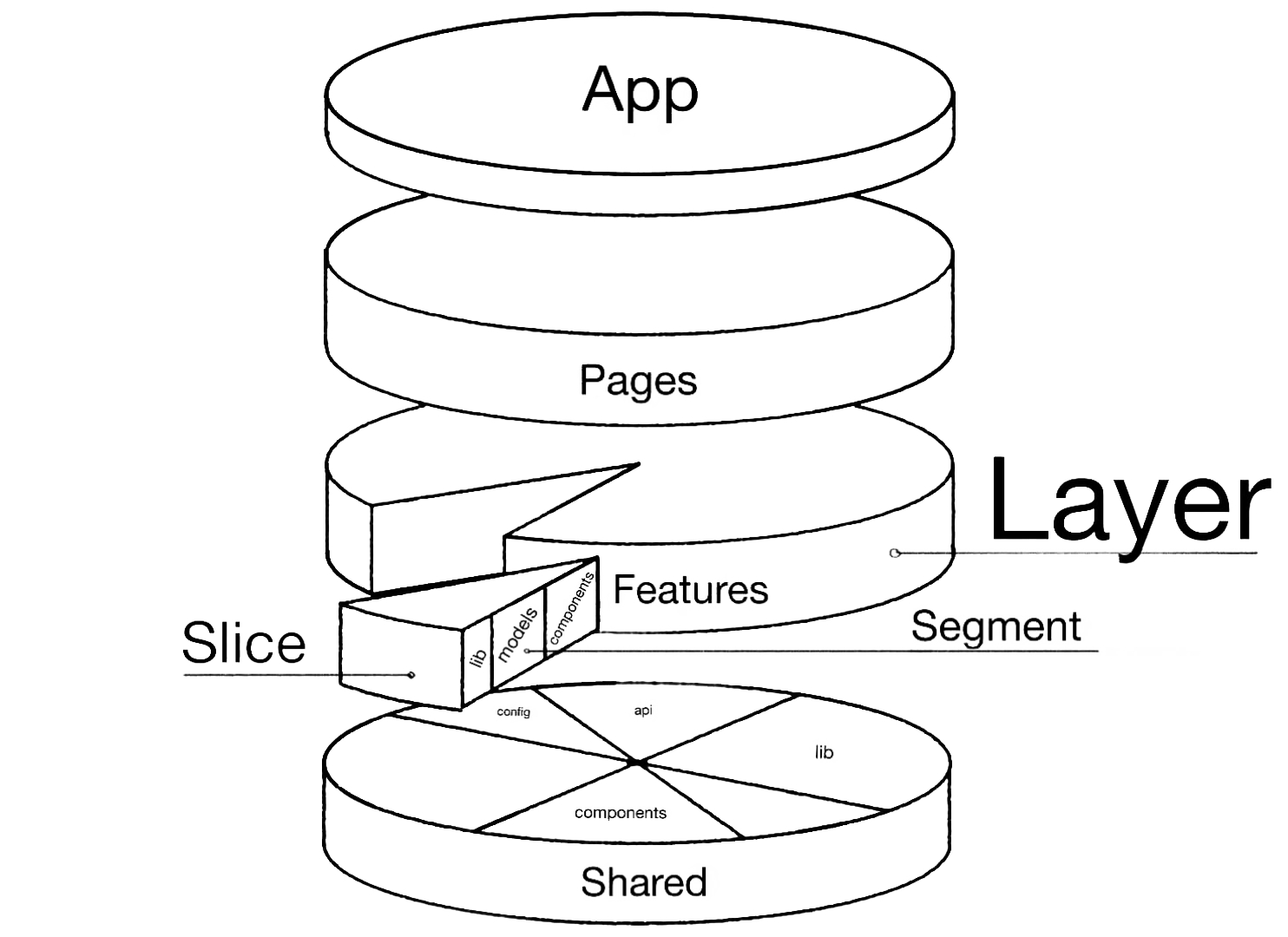🔎 Intro

FeatureSliced is an architectural design methodology for frontend projects. It aims to divide an application according to business logic and scopes of responsibility.
- Provides explicitness, controllability and adaptability of architecture
- Based on time-tested design practices and concepts
SOLID,GRASP,DDD,Separation of Concerns,Vertical Slices,Public API,Isolation - Suggests dividing the project according to business units
note
The methodology is not tied to a specific tech stack and is applicable to any frontend projects in general.
But the current version is based on and provides examples for JavaScript + React stack.
Basics

More details: "Concepts, Abstractions, Structure"
Motivation
Usually, approaches to building the frontend architecture from project to project are re-invented from scratch, thereby adding "project knowledge"
Despite the fact that the specifics of frontend projects do not differ so much
At the same time, incorrectly made decisions often lead to problems of scalability of the project and the team.
And therefore, instead of inventing and documenting it every time, it is better to summarize the experience and form a working, battle-tested and documented methodology for designing the frontend architecture.
Yes, there are many practices and patterns (SOLID, GRASP, DDD, ...)
But for the frontend it is highly difficult to find well-established and specific approaches
Overview
The methodology is designed to simplify and standardize the decomposition of logic for large and long-lived projects.
To do this, it introduces a number of concepts and abstractions, on which the architecture can be based from project to project - from here we get a number of advantages
info
Module - the structural unit of the project (file / directory)
Explicit business logic
Modules are distributed according to scope of influence, business responsibility and technical purpose
Thanks to this, the architecture is standardized and becomes easier to read
Adaptation to new conditions
Each component of the architecture has its own purpose and does not affect the others
Thanks to this it is possible to independently modify the functionality of the application to meet new requirements without unforeseen consequences
Technical debt and refactoring
Each module is independent and self-sufficient
Thanks to this you can rewrite it from scratch without unexpected side effects
Scaling the project and the team
The increase in functionality leads to significantly less complexity of the project, since all the logic is distributed deterministically and in isolation
Thanks to this it is easy to add and onboard new people to the team, as well as expand the functionality of the project
Controlled reuse of logic
Each module has its own limitations and recommendations for reuse according to its layer
Thanks to this, a balance is maintained between compliance with the DRY principle and the ability to customize the module logic without overhead overrides
What's next?
🚀Quick dive into the methodology
Practical guides and application examples
Core concepts for better understanding and application
Reference details of core concepts
The philosophy of methodology, its goals and place in the modern frontend
Community resources, additional materials
Examples of projects built with Feature Sliced